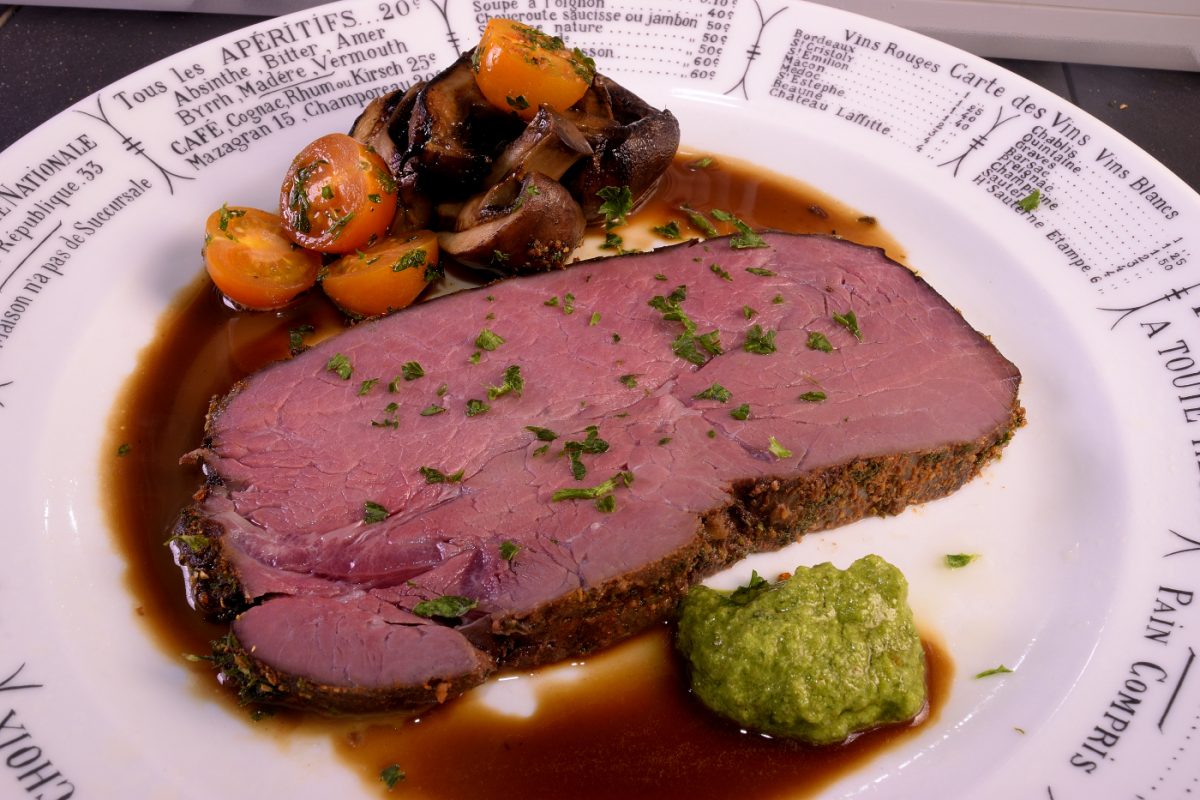London Broil never had it so good!
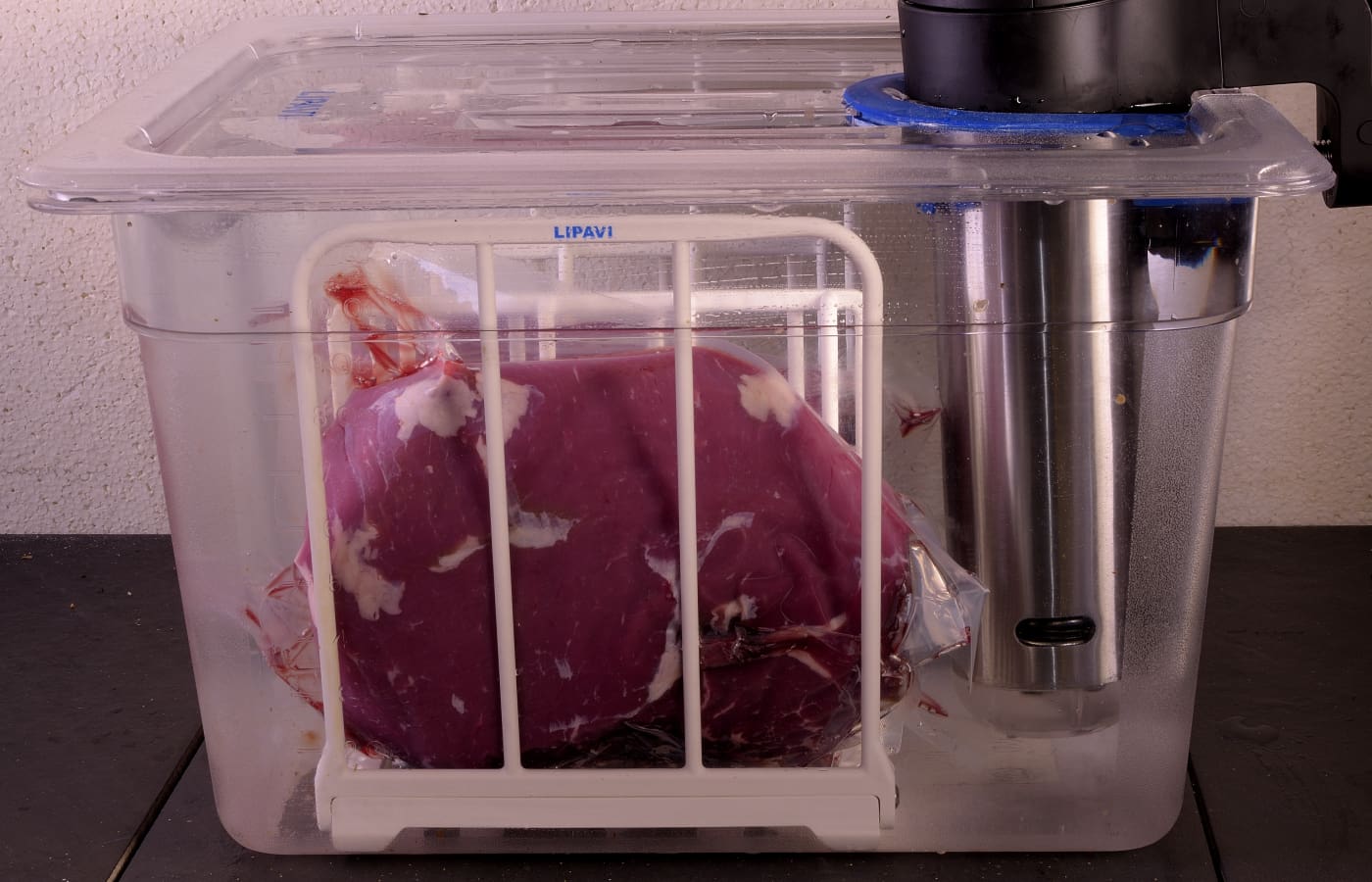
Actual Prep Time: 1 hour
Serves 4+
Level of difficulty 3.0
In our article entitled You don’t have to be a butcher, we demonstrate how to disassemble a whole top sirloin primal cut. Not only can this result in considerable cash savings, it also gives the enthusiast more control over the quality of each individual cut. Any top sirloin roast between 2 lbs./900g and 5 lbs./2.25Kg is suitable. The same time and temperature parameters apply to any roast within that weight category. In the sous vide environment, weight is less important than the distance from the surface to the geometric center, which varies only slightly in most cases..
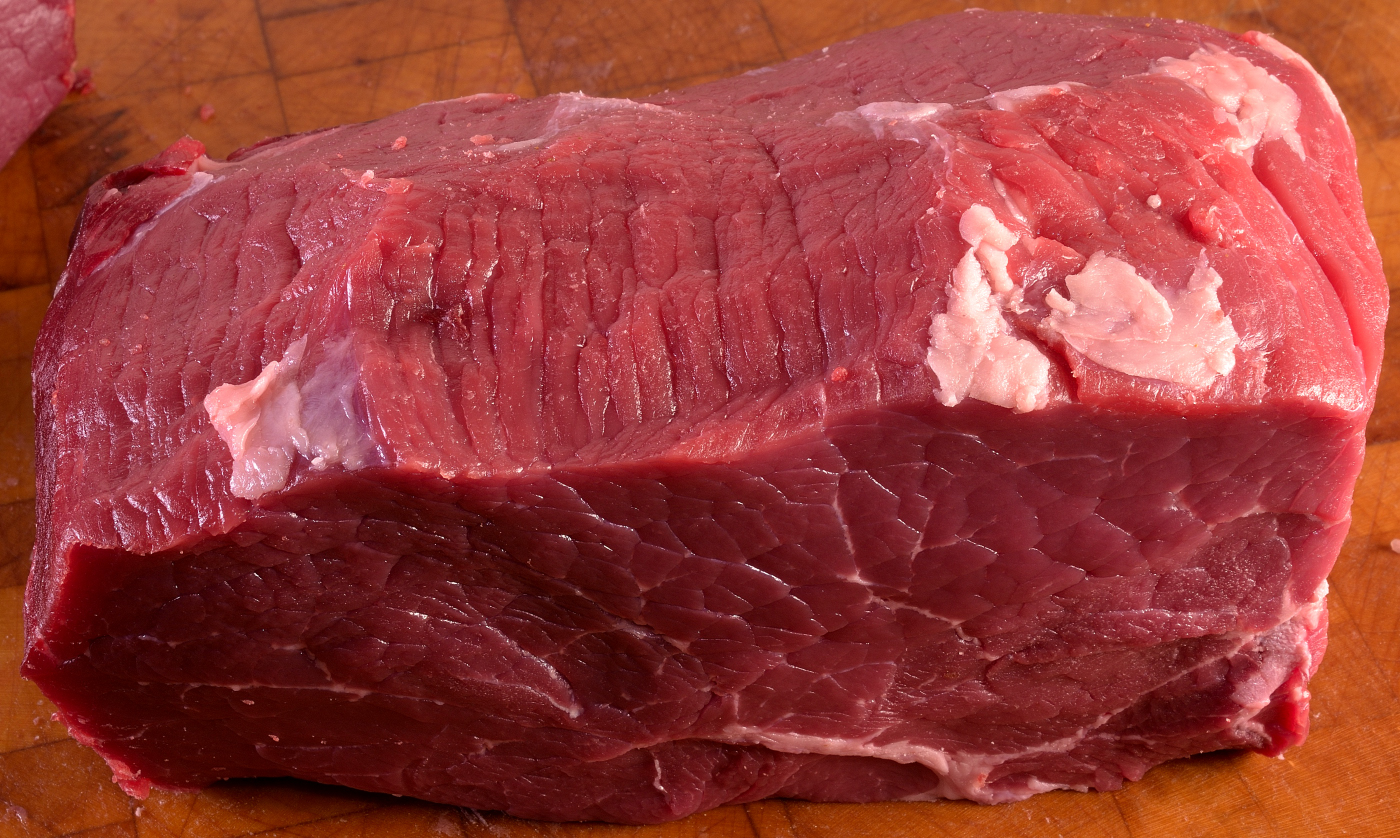
Procedure:
Preheat the sous vide bath to 129 F/53 C.
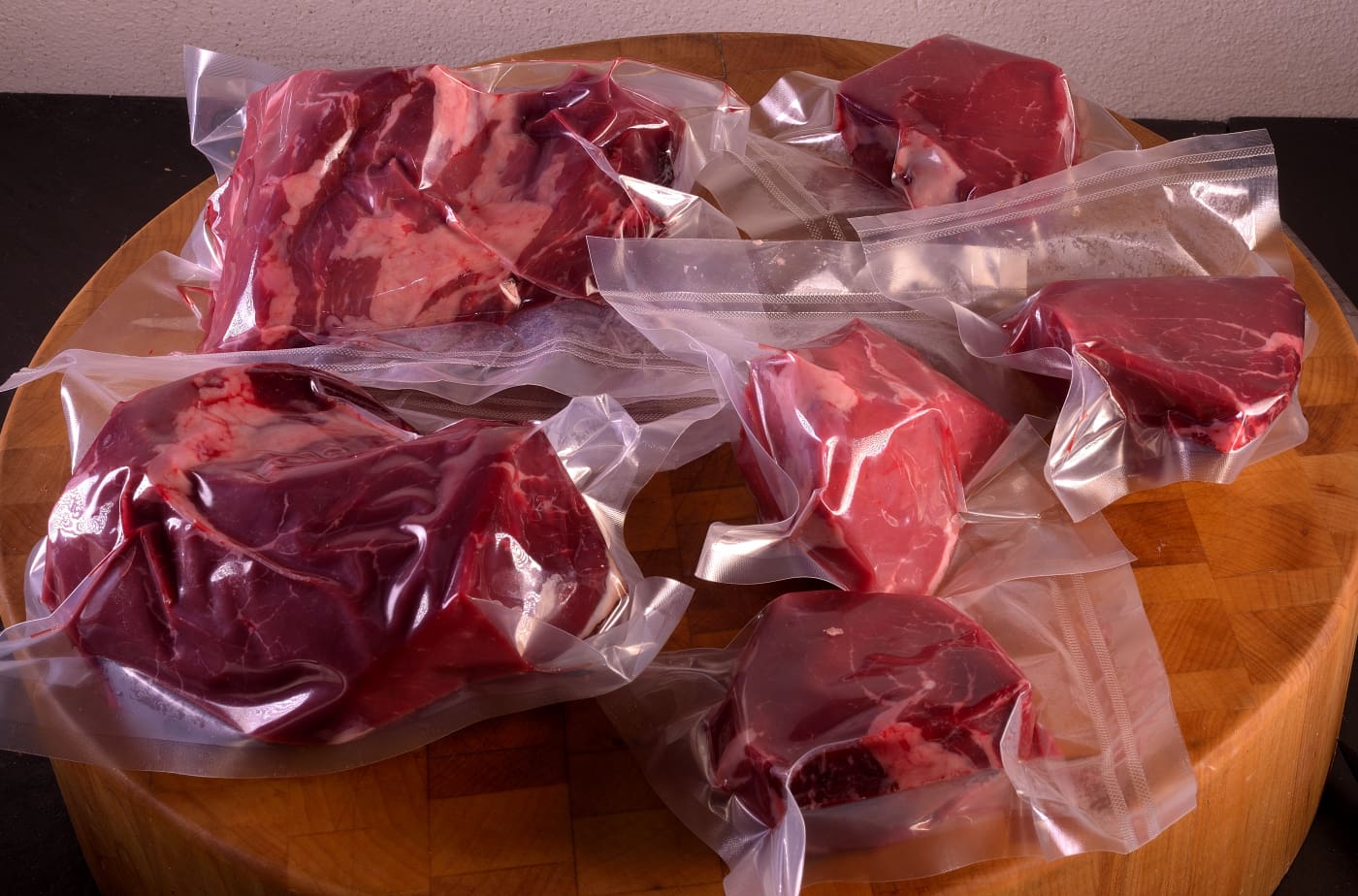
Above: after disassembling the entire top sirloin, we have a number of roasts and steaks.
Vacuum seal the roast in heat rated plastic and sous vide process at 130 F/54 C for a minimum of 8 hours, as per your texture preferences and convenience. Over time, the cut will slowly become more tender–but after the roast achieves the target temperature, its appearance of doneness will not change.
After processing, the roast is fully pasteurized.
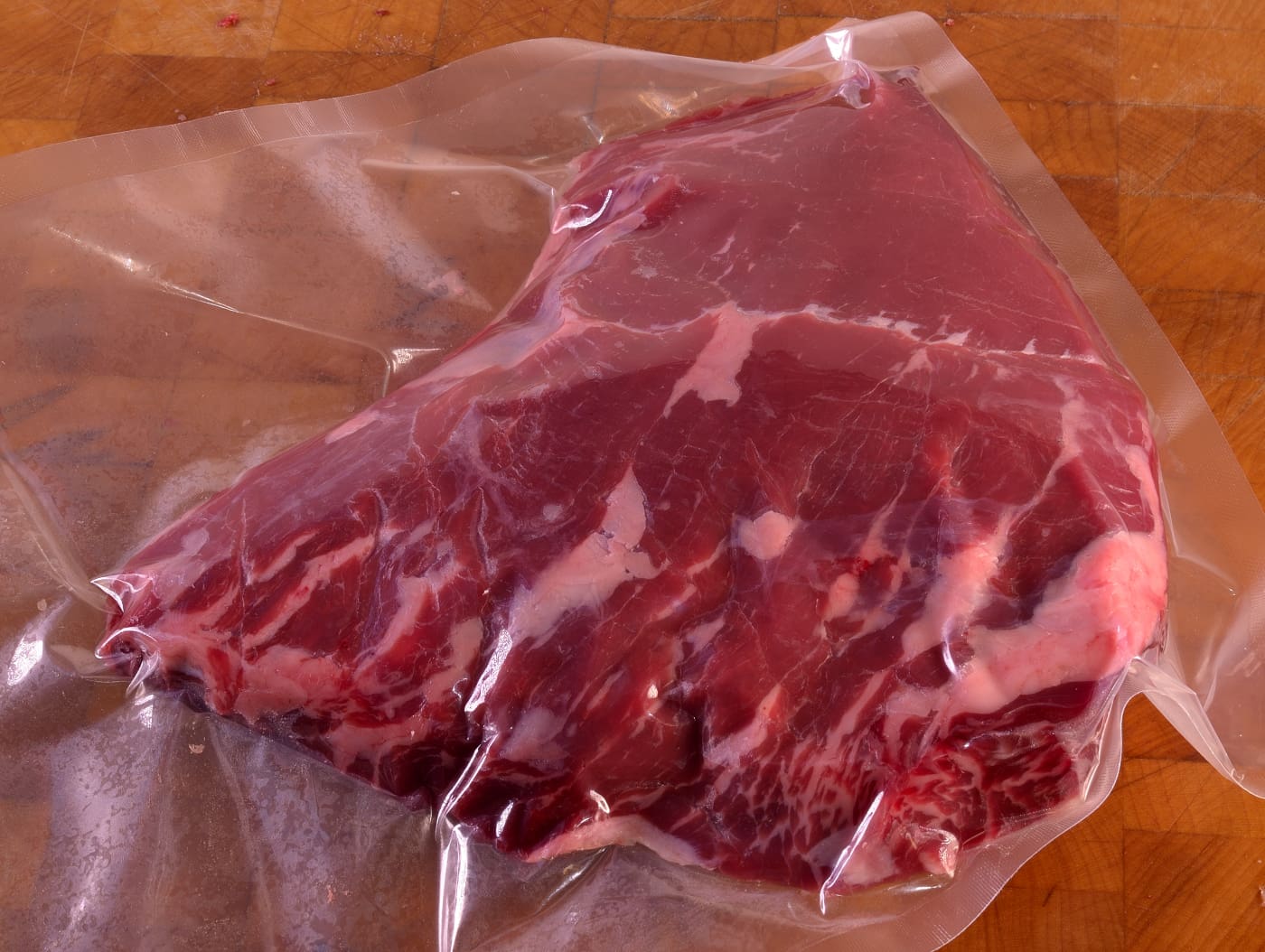
Above, the highly prized Coulotte/Picanha roast, recipe linked .HERE.
Tenderness
Time determines the texture/tenderness of sous vide processed proteins, but time cannot be used to MEASURE tenderness. If you are interested in determining the level of tenderness of your sous vide project in real time, familiarize yourself with The pinch and poke method. Enthusiasts should practice using this technique to test all roasts and steaks. Eventually, you will be able to quickly and easily determine when any cut of any protein has become sufficiently tenderized–even if you are not using sous vide!
After your processing interval has elapsed, shock the package in iced water until it achieves 70 F/21 C. Refrigerate to 40 F/4 C. Do not put the hot package in the refrigerator–home refrigeration equipment is not designed to or capable of chilling hot foods in a safe period of time. Putting the hot package in the refrigerator also puts other foods in the vicinity at risk.
In this preserved state, the roast can be held at 40 F/4 C for at least two weeks before either proceeding to the next step or utilizing in another application. If you prefer your beef cooked to a greater degree of apparent doneness, the original processing temperature can be adjusted according to the guidelines outlined at Doneness Preferences.
Dip the chilled package in hot water (or a functioning sous vide bath) for five minutes to dissolve the gel. Cut a hole in the end of the package and harvest the juices as explained HERE.
Seasoning
Properly seasoning sous vide proteins is almost as important to desirable results as the sous vide processing itself.
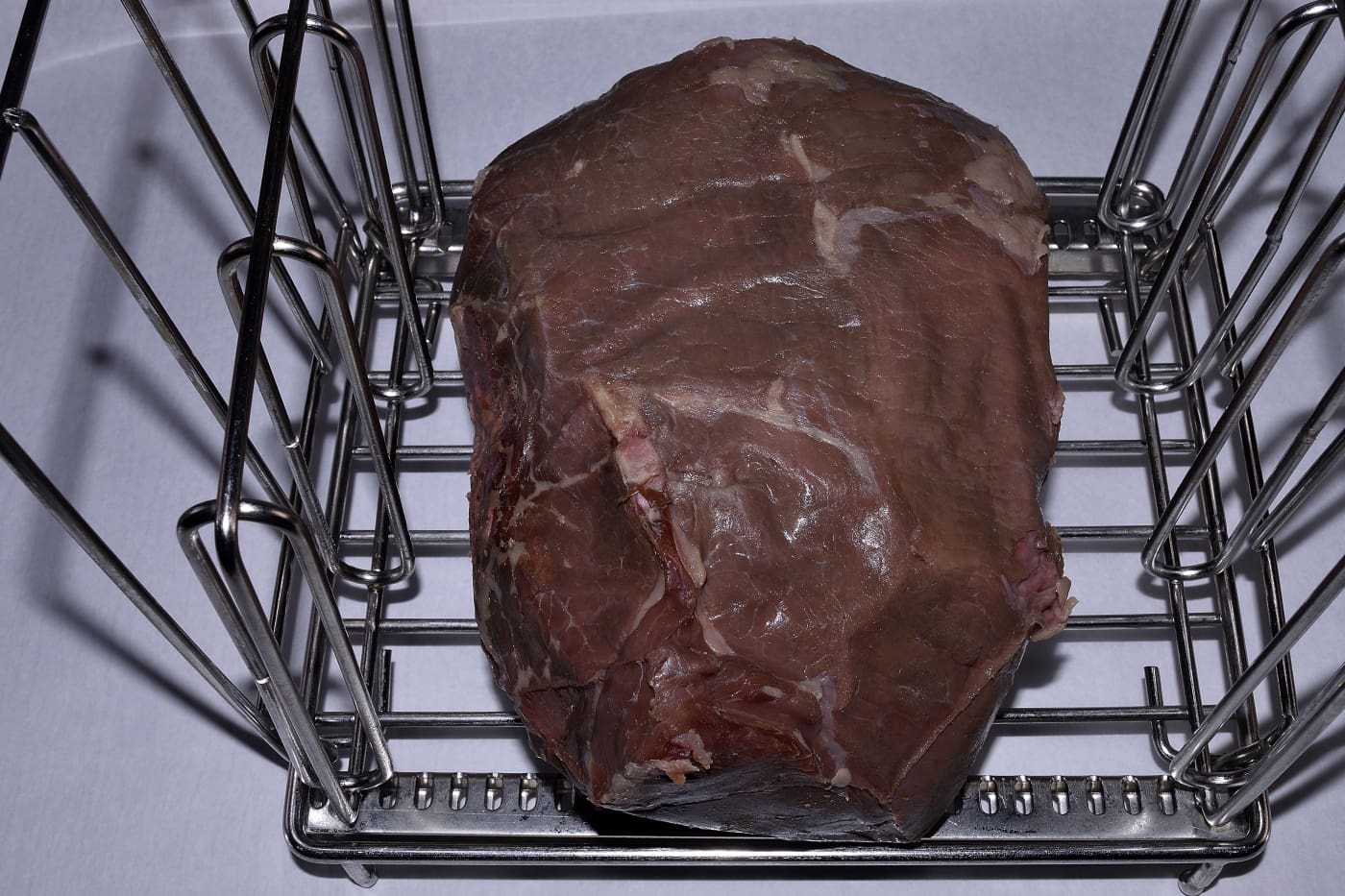
Lipavi stainless steel racks can be used not only for sous vide processing, but for transport, smoking and cold shocking. They are rust proof, dishwasher proof and smoker/oven proof. Most reliable sources concede that nothing other than sodium ions can penetrate the surface of land or air dwelling proteins. So…
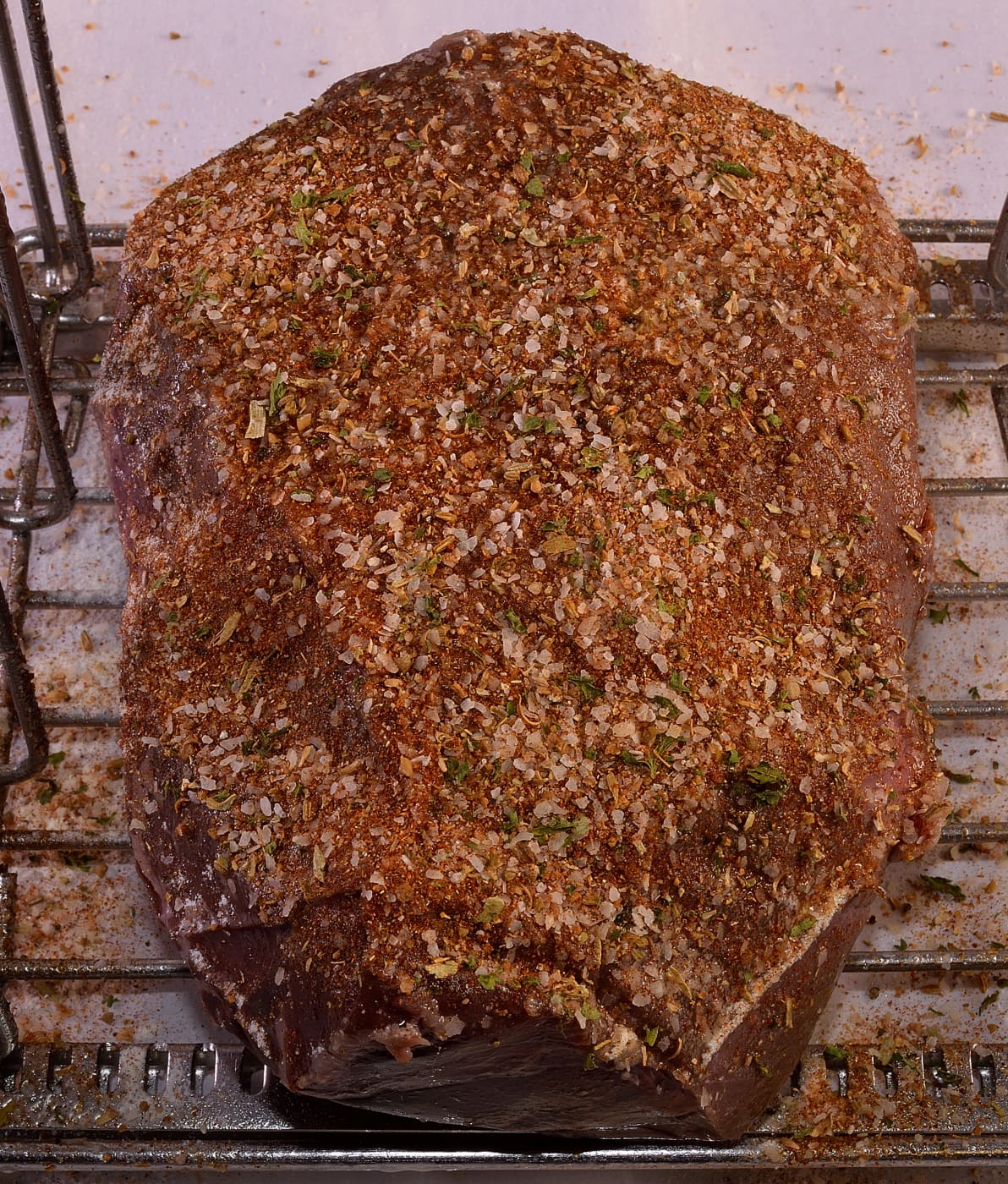
We have developed a method for applying a flavorful and durable crust to roasts and/or steaks, detailed in the article “Seasoning Sous Vide Proteins effectively.”
Smoking
Always cold shock sous vide proteins before smoking. Why? If the roast is staged directly from the bath to the smoker, the internal temperature will continue to rise, negating the original benefit of sous vide processing. Meat also collects the most amount of smoke flavoring between the temperatures of 40F/4C and 140 F/60 C. Using a cold start for the outdoor smoker can also help limit exposure to toxic gases. Set the smoker at 180 F/83 C or the lowest possible setting. The lower the setting, the more smoke flavor will be applied. A top sirloin roast of this thickness can stay in the smoker for 6+ hours at this temperature without overcooking.
If you do not have access to an outdoor smoker, a generic kitchen oven will still give excellent results. Most ovens can be set as low as 225 F/107 C, in which case the roasting process will most likely go somewhat faster–usually 2-3 hours. In either case, use a probe thermometer to make sure that the internal temperature of the pasteurized roast achieves at least 125 F/52 C.
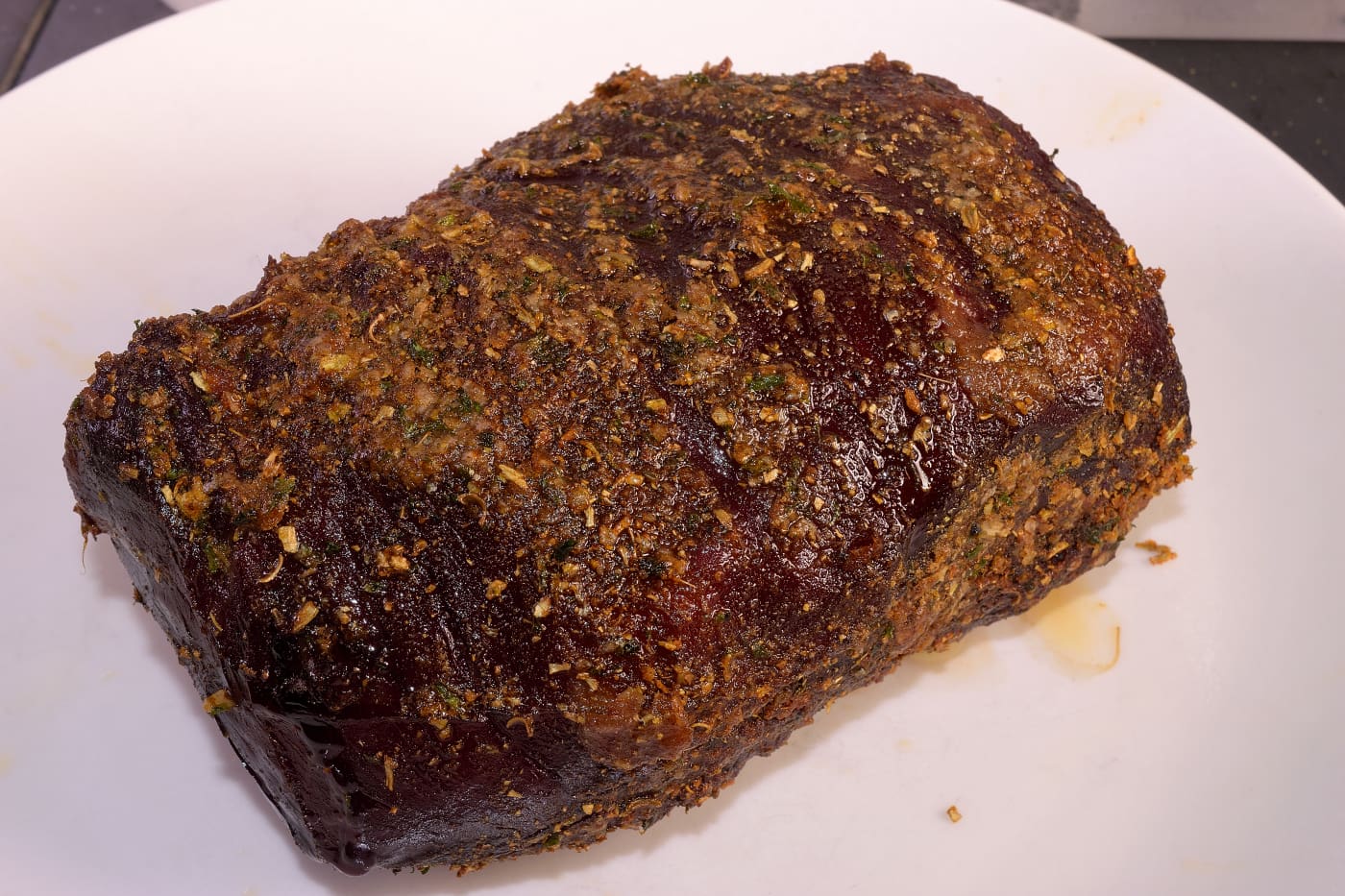
Remove the roast from the smoker or oven.
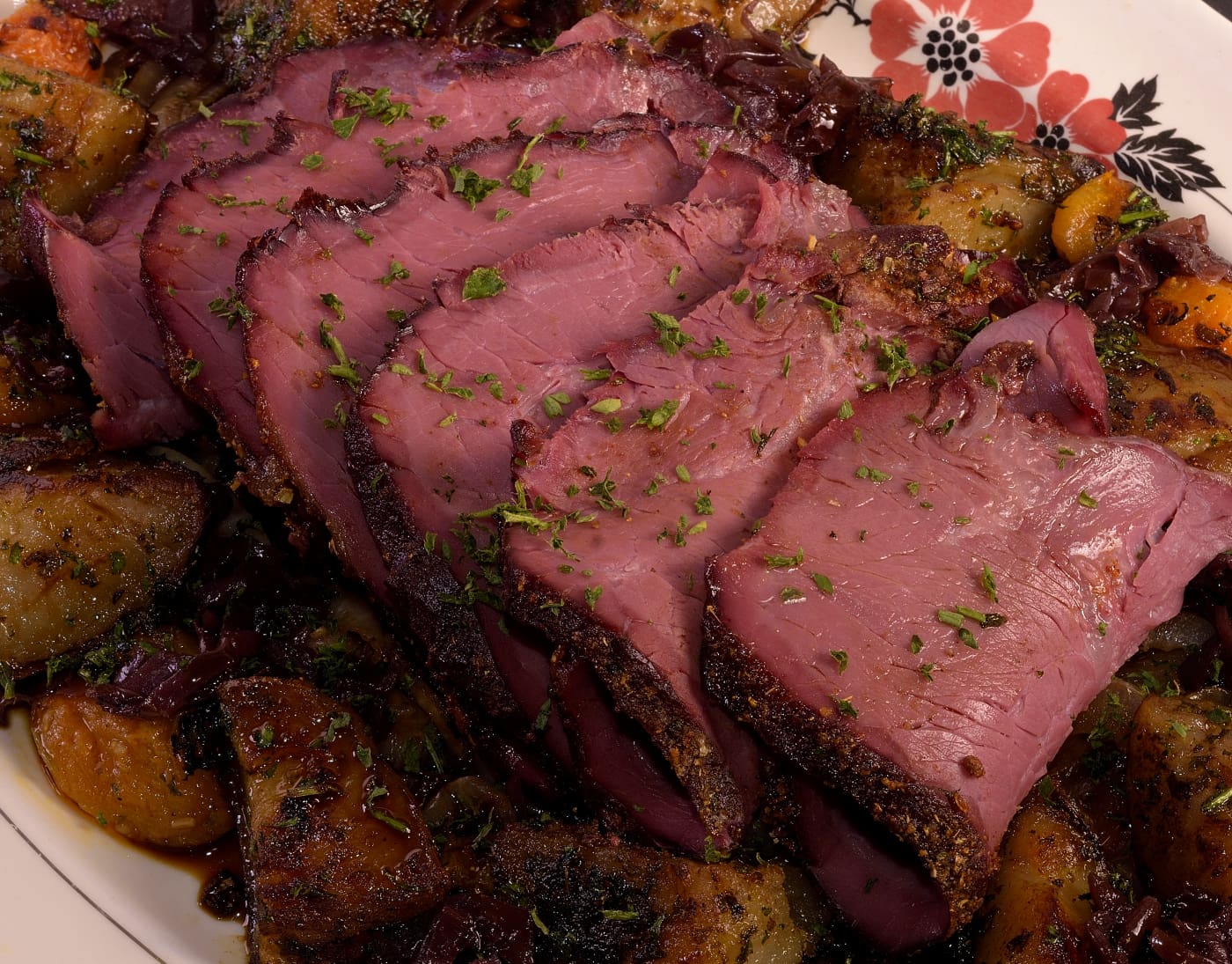
Slice thin on the bias. On the platter above: roasted red potatoesand red wine cabbage. Scorched onion/cherry tomato relish.
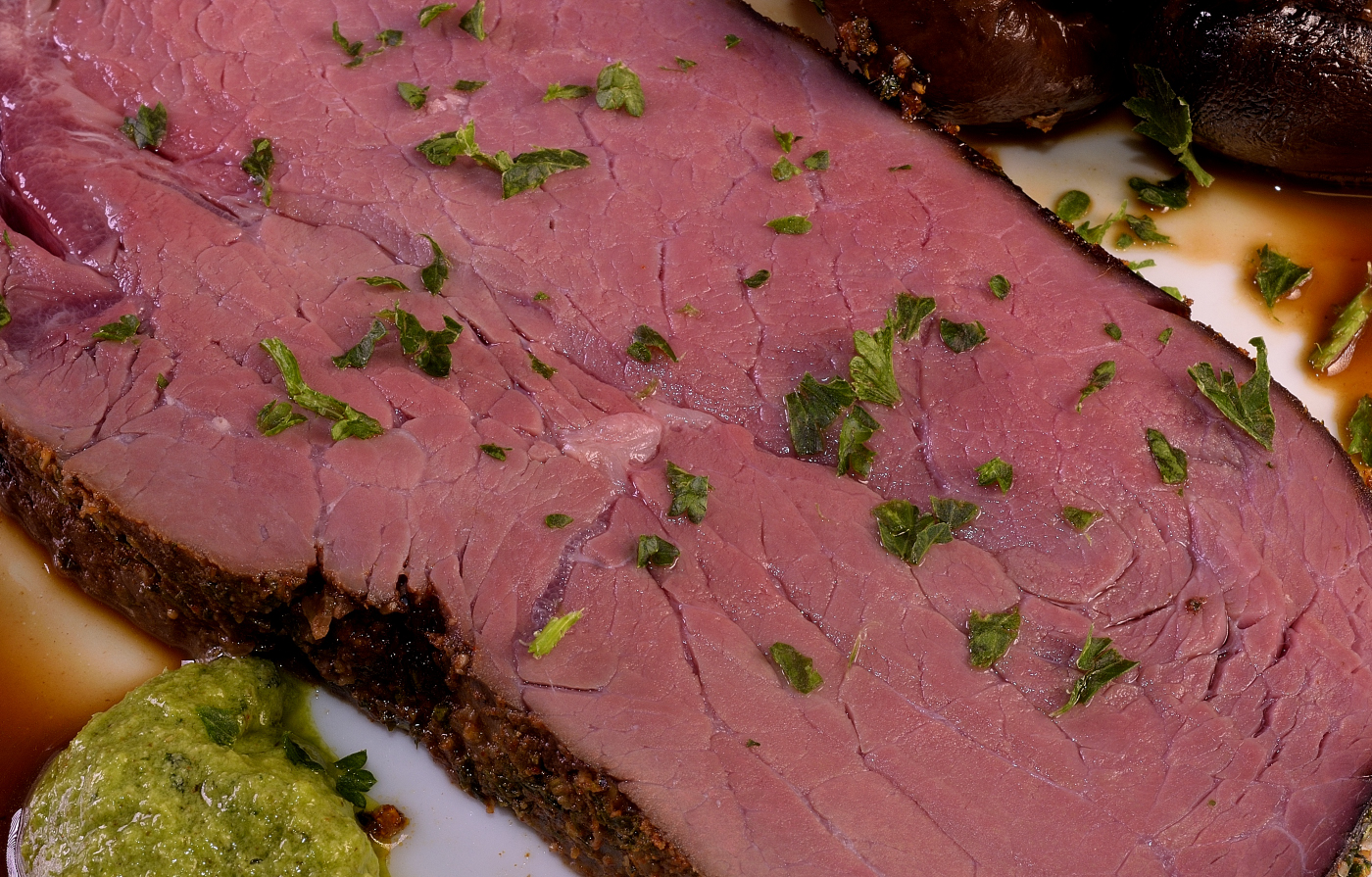
Or slice it thick–sous vide eliminates the need to make tough meet seem tender!
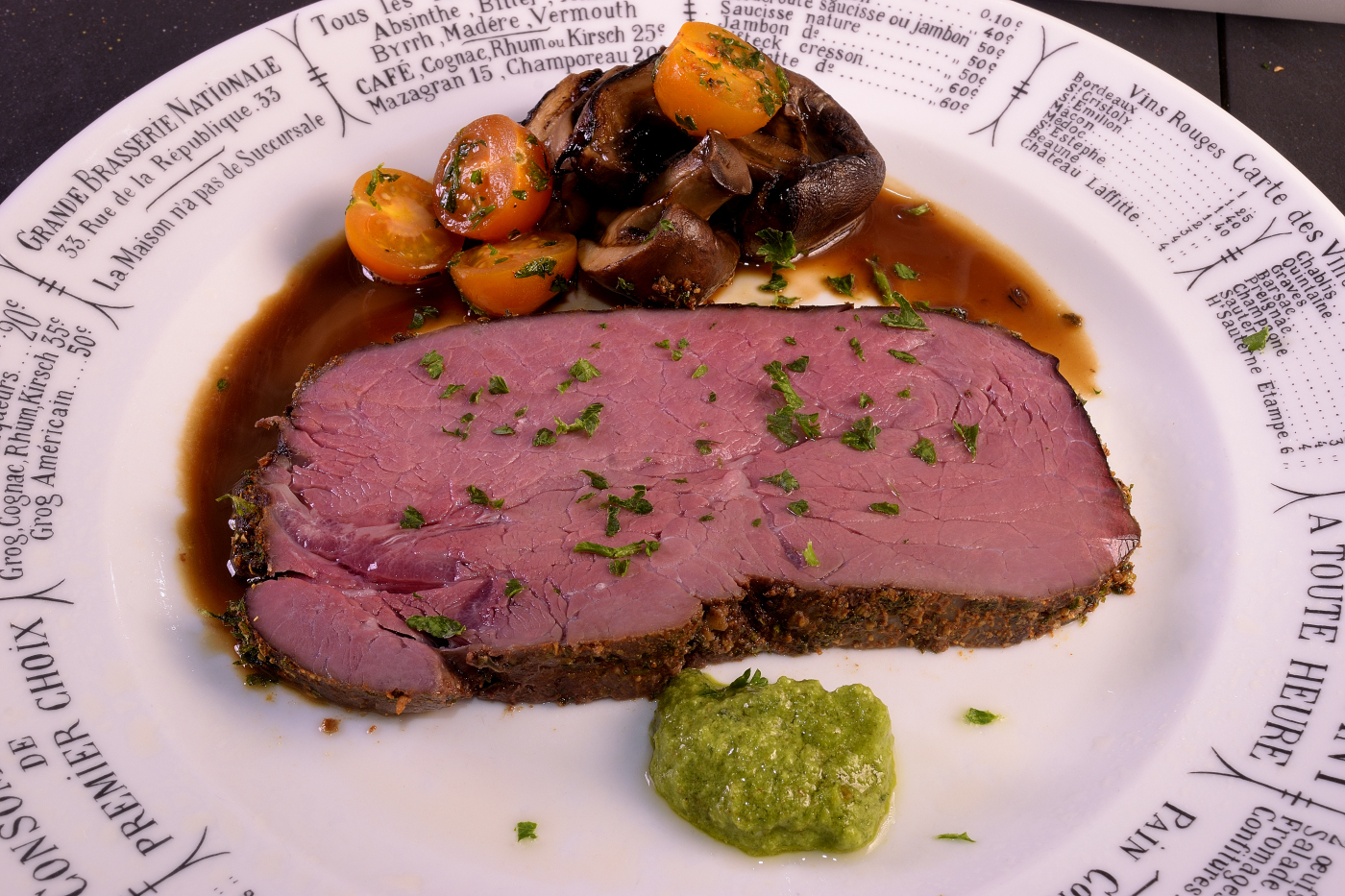
See more recipes for Top Sirloin HERE.
Norm King
Visit us live on Facebook at SVR–Sous Vide Resources; Low Temperature Pasteurization, Sous-B-Q™
